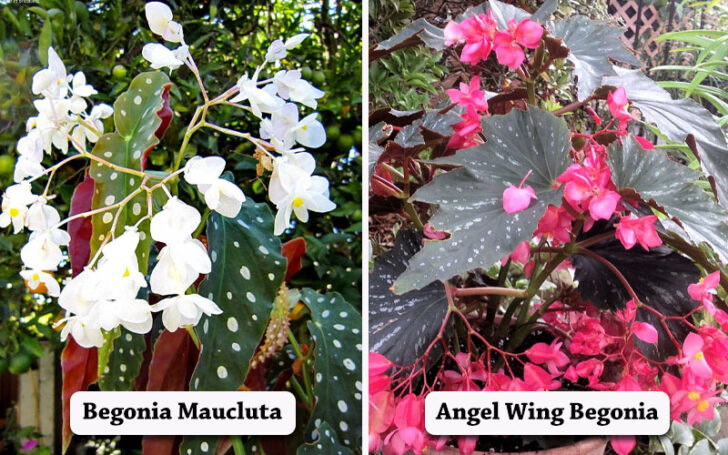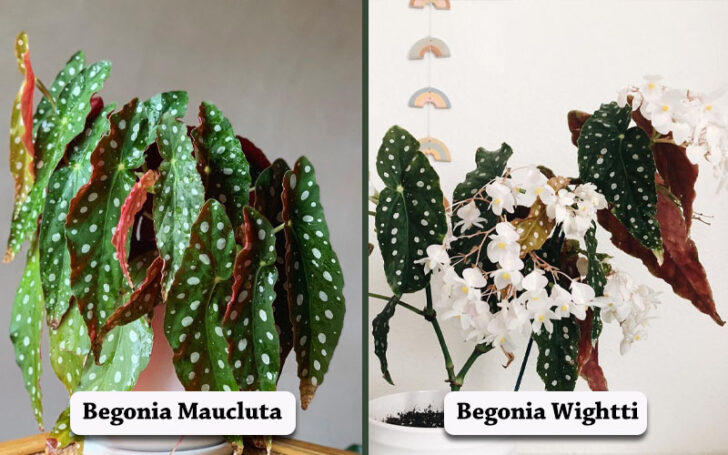Garden
The Polka Dot Begonia Maculata: Propagation, Growing Tips, And More
Have you seen animals or plants with polka dots on it?
How many so far?
The most common in animals are leopards and butterflies.
What about plants?
Are you racking your brains?
This is normal because we have rarely seen plants with such spots.
Therefore, let’s introduce you to such a festive, cheerful and innocent plant called Begonia Maculata, whose leaves are magnificent silver-spotted.
So, let’s start exploring this beautiful indoor plant.
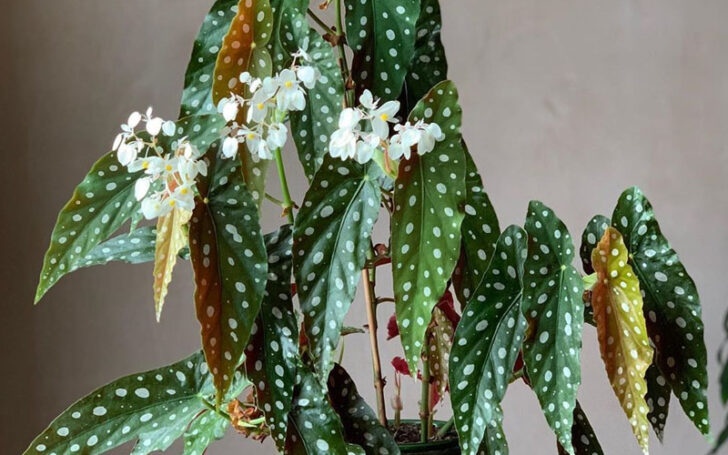
Table of Contents
What is Begonia Maculata?
Begonia Maculuta is a perennial indoor flowering plant with large angel-like leaves with silver polka dots on them. They are easy to grow and make excellent houseplants as long as we pay attention to their cultural needs such as high humidity and partial sunlight.
The genus Begonia has more than 1800 species and the most common of these is Begonia Muculata Wightii.
Its scientific name is Begonia Maculata Variegata.
It is grouped among reed begonias because of their thick reed-like stems.
Taxonomical Hierarchy of Begonia Maculuta
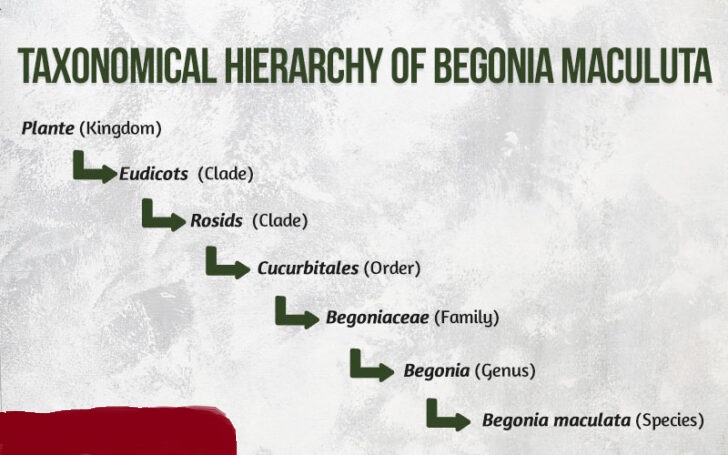
Characteristics of Begonia Maculata
- Perfect for growing in pots or pots.
- They come from the tropics, where there is a wet and dry season.
- They can take some drought stress, which shows up in the form of bleach-colored leaves, but will come back as soon as you water them.
- The plant blooms, which means it has beautiful clusters of white flowers.
- The average height they reach when mature is 3-4 feet above the ground.
- The good thing about pruning is that it doesn’t require special pruning tools to cut a certain way. Instead, you can randomly cut it.
- Begonia Maculata is toxic to cats, dogs and other pets.
Begonia Maucluta vs Angel Wing Begonia
Some people confuse Begonia Maculata with Angel Wing Begonia, which must be understood.
Both belong to the same genus but differ in their species.
Begonia Maculata, one of the begonia species whose scientific name is ‘Begonia maculata’,
Against this,
Angel Wing Begonia is a hybrid of Begonia aconitifolia and Begonia coccinea.
Another difference lies in their flowers.
Begonia Maculata has white flowers while Angel Wing Begonia has pink to reddish flowers.
However, due to the angel-like leaves of Begonia Maculata, it is also sometimes called Angel Wing Begonia, although it is another species.
Begonia Maculata vs. Wightti.
Another similar confusion people have is about Begonia Maculata and Begonia Wightii.
quite interesting,
Wightii is not a different variety; it may instead be called a sub-varietal of the most popular, Begonia Maculata, with white flowers.
It is so popular that when we talk about Begonia Maculata, we mean Begonia Maculata Wightii.
With 1800 different types of Begonias, it is difficult to remember each variety, so the most popular are the most well-known.
Other popular varieties are Angel Wing begonia, Rex begonia, begonia Tamaya, Tuberous begonias, etc.
How to Propagate Begonia Maculata?
Begonia Maculata propagation is as simple as any other plant. The good thing is that it can spread in three different ways:
1. From Stem Cuttings
Root cutting can be water-based or direct soil method.
Water Propagation:
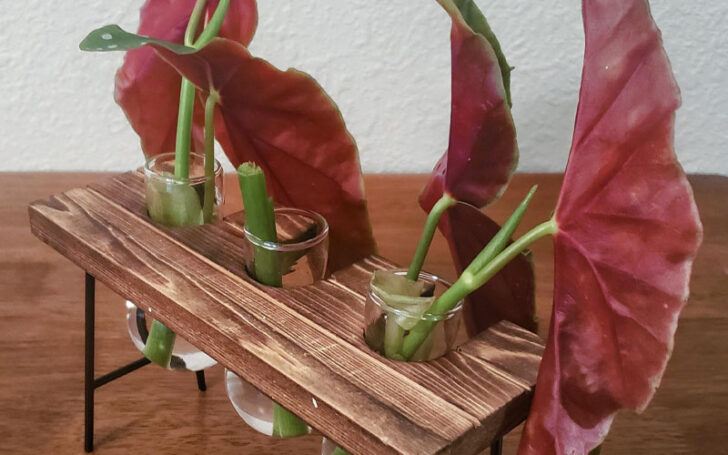
In the water spread, take a stem with at least 1-2 sprouts and submerge it halfway into the container of water.
Once the root of the plant reaches half an inch tall, it’s time to move it from the water to the soil.
It is not recommended to move it directly into the ground. Instead, keep adding spoonfuls of the soil mixture to that water container often, until one day it completely replaces the soil.
While doing this, keep the stem moist as well.
Now check it by flexing it slightly from the top. If its roots are firm, it’s time to move.
Transportation will be normal.
Fill the 3-inch pot with the same soil mix as you filled that pot of water, leaving enough space in the middle.
Now, remove the rooted plant, make sure the roots are covered and placed in the center of that pot, and then cover with the soil mix.
Water it and place the pot in a warm place.
Soil Propagation:
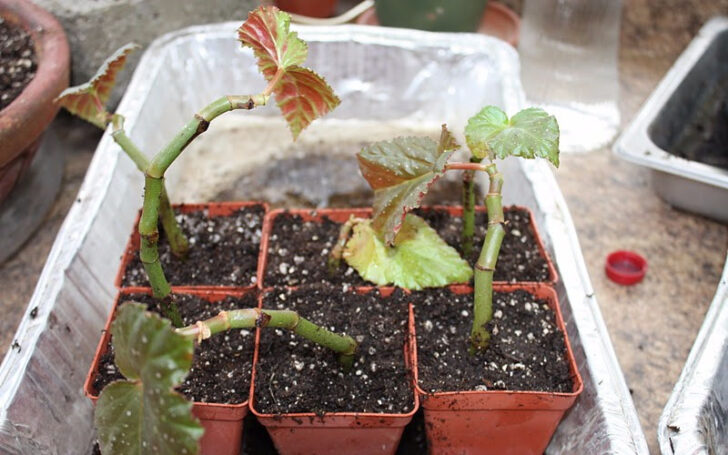
It is a one-step method.
After dipping 3/4 of the cutting in root hormone powder, plant it in the soil.
Whichever method you follow, directly from soil or water to soil, it’s best to cover the pot with clear plastic once it’s in the ground.
Keep unrolling after a day or two while keeping it moist.
2. From Leaf cuttings
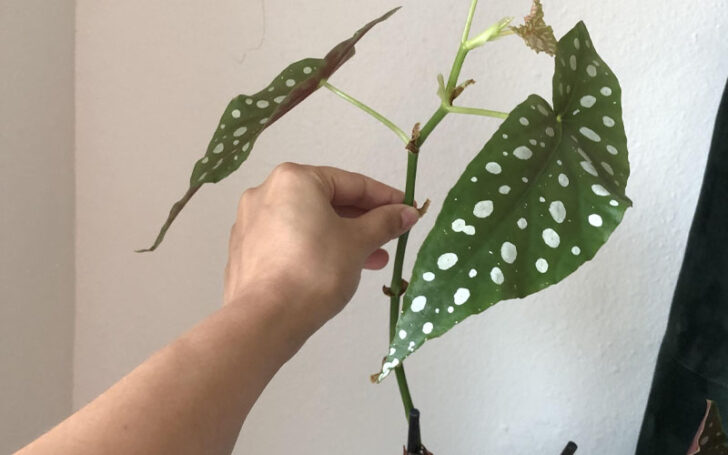
Begonia is one of the plants that can reproduce well from its leaves.
What you need to do is simple.
With each of these flowers, pluck 2-3 flowers, leaving an inch or more of petioles.
Lay a flat sheet upside down on a surface. Make a small U-shaped cut with a sharp knife at the stem end so that the veins are dispersed between the leaf and petiole.
Do this with the other leaves and finally bury these leaves in the ground from the cut end.
After six weeks you will have seedlings ready to be transplanted in a separate pot or elsewhere.
3. From Seeds
It is most difficult to propagate Begonia from seeds because Begonia plant seeds do not have a high germination rate.
However, if you like growing plants from your own seeds, give it a try.
Seeds can be obtained from an already grown begonia Maculata plant. You can find them at the end of the stems when the flowers begin to die.
Get a peat pot or a cardboard egg carton filled with soil.
As a next step, put that bowl in another large bowl filled with water.
Now here is the key,
Always water from the bottom, because Begonia Maculuta seeds are so thin that watering from the top bury them easily.
Now, when the soil is completely moist (it exhibits a dark brown color), break the seed coat and sprinkle the seeds on the soil.
Remember here
To prevent the seeds from flying away,
Put a very thin layer of soil on them.
Finally,
Place this container in a sunny location. In a few weeks, green shoots will begin to appear.
How to Grow Begonia Maculata? (Polka Dot Plant Care)
Growing Begonias is simple for casual gardeners but gets tricky for beginners.
Therefore, if you are a beginner in gardening, it is recommended that you know the basic gardening tips before you start.
And always use practical garden tools to avoid damage to plants and save time.
So let’s look at how to grow Begonia Maculata along with begonia Maculata care under each of the headings below.
1. Soil
The soil should be well-drained, but this can retain moisture.
Begonia Maculata grows well if the soil is a mixture of clay, loamy soil and some sand.
It is recommended to add a layer of gravel to the bottom of the pot to prevent root rot.
It is always recommended to put a soil mess
2. Water
You have to be very careful when watering this plant.
They are so sensitive to overwatering that if you water them more, root rot is bound to happen.
Many people complain that their leaves turn pale yellow as a result of overwatering, as in the case of Scindapsus Pictus.
If your begonia goes through the same, stop watering until the soil is dry and then water again.
Best practice is to follow the dry-wet cycle. This means that when the soil dries up, you simply feed them more water.
The self-watering basket can be of great help here when used correctly.
3. Temperature
the required temperature is above 60°F or 15°C.
Keeping them at temperatures lower than this puts them under a lot of stress.
4. Humidity
Polka Dot Begonia requires a high level of humidity – at least about 45%.
It is difficult to achieve this humidity level on normal days as our rooms are not that humid.
So where will you put it? In the toilet where the humidity is high? Of course not, because such a beautiful plant is worth placing in your living room, bedroom and balconies.
Therefore, use a humidifier or place a tray of water near it so that evaporation produces enough moisture for this plant.
5. Sunlight
These plants really do better if you give them quality light. Therefore, the Begonia pot should be placed where there is partial sun, such as early morning or afternoon sun.
However, they can also adapt to full sun if you gradually make this a habit. In this case, the leaves will change their color to rice color.
Therefore, do not forget that these plants need sunlight.
It’s not like you keep them in the corner of your room and wait for them to evolve.
6. Fertilizer
When it comes to fertilizer for these plants, we can say that these plants grow better if you regularly feed them with manure.
No special type is required. A normal balanced fertilizer with even NPK numbers is fine.
Always use a waterproof garden mat to mix the fertilizer with the soil to avoid mess.
7. USDA Zone
For Begonia Maculata, it is USDA zone 10.
8. Pests
The good thing is, it doesn’t prey on any insects.
Common houseplant pests such as mealybugs and whiteflies can infect this plant, although common treatment for managing indoor plant pests works.
9. Pruning
The good thing about Begonia Maculata is that you can cut them right off the top without fear of regrowth.
That said, if it’s over a meter tall, blindly lower it to a meter and it will grow back.
Common Diseases That May Catch Begonia Maculata
1. Begonia Maculata Leaves Curling
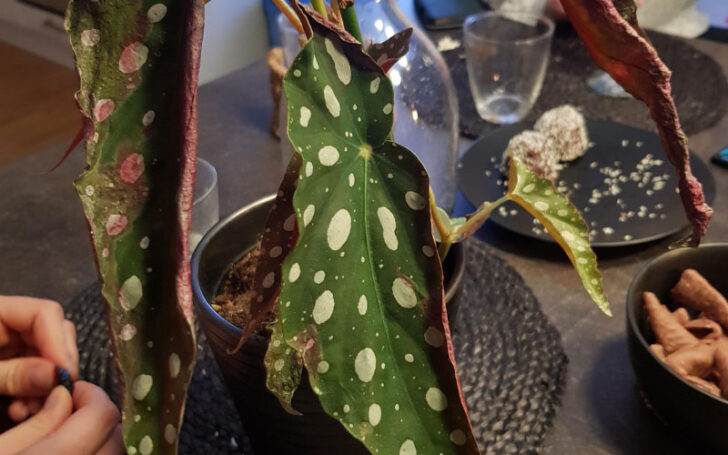
It’s often a sign of overwatering – this causes root rot which means the leaves aren’t getting enough water and therefore curling.
It can also occur, though occasionally, due to insufficient irrigation or excessive use of fertilizers.
2. Begonia Maculata Brown Spots
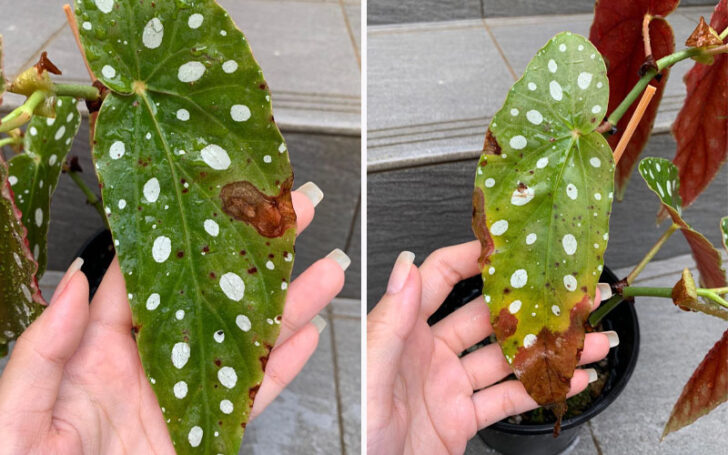
These brown spots on Begonis Maculata mean they have fungal infections called Botrytis, which thrive in wet and very cold weather.
The first treatment is to stop watering until the soil is visibly dry.
Second, remove and destroy all dead parts of plants that attract any fungi and increase airflow around them.
Third, use some fungicide for a week or so.
Conclusion
Like the different species of lily today, Begonia has more than 1800 species, one of which is Begonia Maculata. These are beautiful polka dot plants with long angel-like leaves and beautiful white flowers.
Try this polka dot plant at home and share your experiences with us.
Also, don’t forget to pin/bookmark and visit our blog for more interesting but original information.


